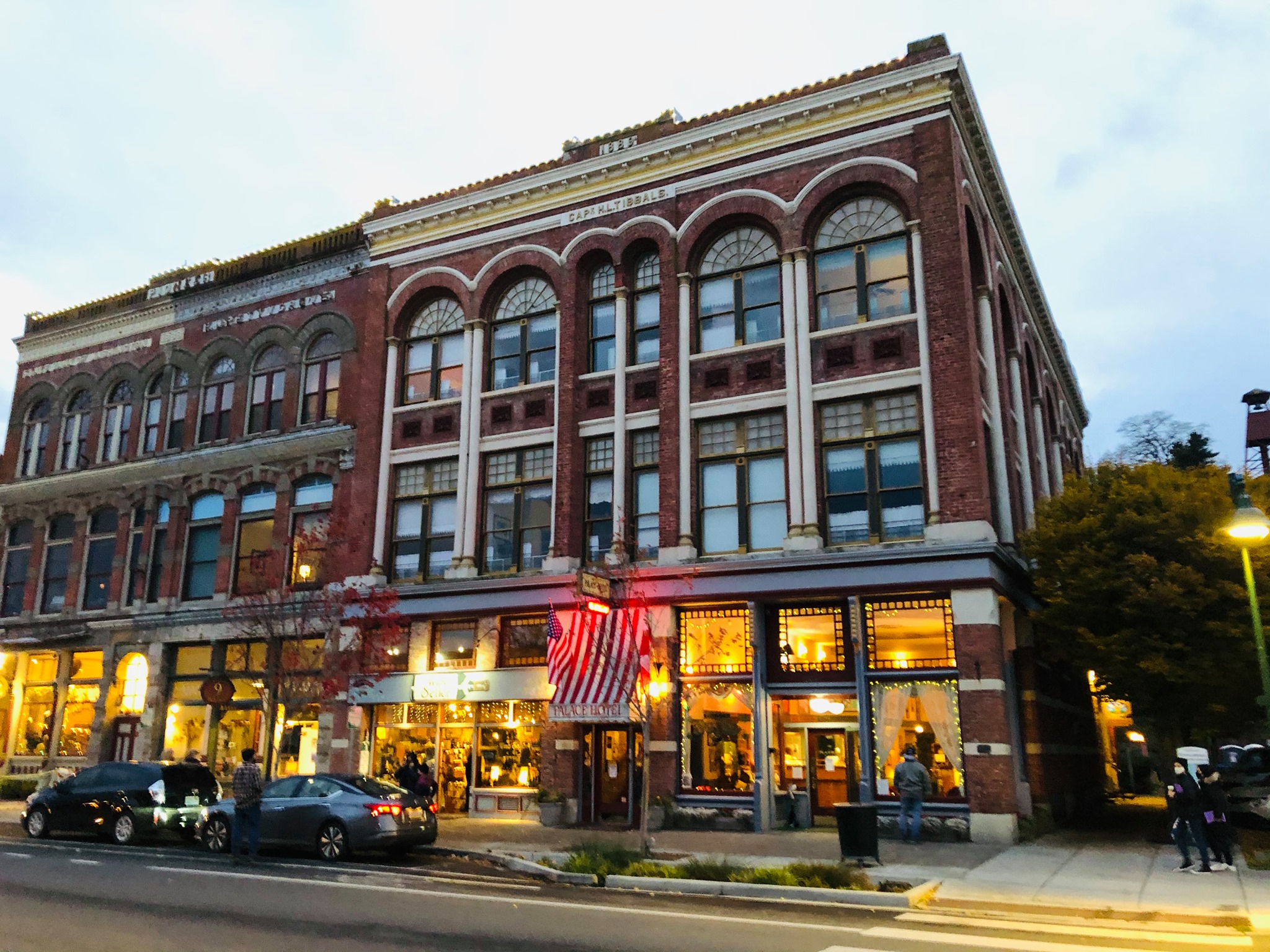Why Main Street Matters to the Economy

By Breanne Durham, Washington Main Street Director
Strong local economies are the lifeblood of resilient communities, our state, and our nation. Does that statement seem obnoxiously bold or overused? Consider this – with Boeing’s recent layoffs, Main Street districts* have become Washington State’s largest employer. In 2019, in just 33 districts in our state, Main Street represented 6,850 businesses (the vast majority small and locally owned), over 65,000 employees (that’s more than Boeing, Amazon, or Microsoft), and $9.7 billion in revenue. Small is mighty, and mighty important.
Main Street programs do more than simply represent these businesses and employees. The Main Street movement has always been rooted in supporting small businesses, and thanks to a recent study by Jon Stover & Associates, we can explain with greater knowledge and certainty exactly how Main Street activities build stronger economies.
If you’re a student of the Main Street Approach, you know that local Main Street programs organize their work around Promotions, Economic Vitality, Design, and Outreach. But simply knowing the Four Points of Main Street doesn’t do much for explaining Main Street’s impact. Because of this, we broke down the four points into eight core functions that each generate direct economic impacts for Washington businesses in different ways**:
1. Festivals and events attract 5.8 million visitors annually and have generated over $100 million in visitor spending
2. Promotions, branding, and marketing bring more customers through small business doors
3. Business attraction and retention activities have resulted in a direct economic impact of $400 million
4. Business technical assistance, grants, and loans by Main Street programs are small businesses’ local support system
5. Building preservation, restoration, and façade improvements leverage historic assets
6. Streetscape and public realm improvements have had a direct economic impact of over $5 million
7. Partnerships and advocacy bring together the right players and resources to support local businesses
8. Community engagement has been valued at $8.7 million in collective economic value of Main Street volunteer hours
Main Street programs serve as on-the-ground experts and advocates for their downtowns – helping fill available storefronts and working side by side with business owners to ensure businesses can remain competitive and open. The economic impacts of these core functions individually and especially as a collective and strategic effort are remarkable. When we talk about economic impact, we may refer to different forms:
Direct economic impact reflects the impact on business operations as a result of the increased customer spending generated by Main Street programming. In 2019, Main Street programs helped create approximately $124.4 million in additional sales for local businesses in downtown districts. Those sales represent direct economic impact attributable to Main Street functions.
Direct economic impacts have ripple effects throughout the community. You may have heard over the years about how much money stays in your community when you shop local – that is what cumulative economic impact is all about. Cumulative economic impact includes indirect (supply chain) and induced (spending of wages) impacts. When a Main Street business has sales revenue, they use a portion of it to purchase supplies and services from other businesses. When a worker whose job is supported by the direct economic impacts spends their income, this household spending creates an induced economic impact supporting even more business activity and employment. When accounting for the business supply chain, business-to-business transactions, and employee spending, the economic impact of Main Street between 2011-2019 includes 8,537 jobs, $397.7 million in salaries, and $821.7 million in sales.
Since 2011, Main Street Communities across the state helped generate $550.3 million in sales for businesses in Main Street districts, supporting 6,405 jobs at those businesses. And here’s the big difference, the reason these sales and jobs truly represent strong local economies: diversity is resilience. No one event, no one turn in the market, no one major layoff can break the largest employer in Washington State: Main Street. While COVID-19 has certainly tested Main Street businesses, their nimbleness, creativity, independence, and community support systems have proven to be largely unshakable.
Main Streets have proven themselves to be the backbone of Washington’s economy. How’s that for bold.
*Data represents just 33 designated Main Street Communities in Washington State and does not include an additional 31 Affiliates that are part of the Washington Main Street network.
**Pages 16-33 break down each of these eight core functions and provide explanation of how the function leads to the impact
Photo credit: Port Townsend Main Street Program
Main Street Impact Series
This is part two of a three-part series where we dive into the types of impact that the study covered: social (communities), economic (businesses), and fiscal (state government). We’re tremendously proud of the communities that are part of the Washington Main Street network and hope you’ll join us in celebrating the many ways they are building local resiliency.
About Main Street
Main Street is a nationwide movement with a 40-year history of providing a useful framework and network for local community builders. The Main Street Approach encourages partners to come together to enhance a historic downtown district through a focus on Design, Economic Vitality, Outreach, and Promotions. In Washington State, local Main Street organizations are supported by the Washington State Main Street Program, a program of the Department of Archaeology & Historic Preservation managed by the Washington Trust for Historic Preservation. Learn more at www.preservewa.org/mainstreet.
